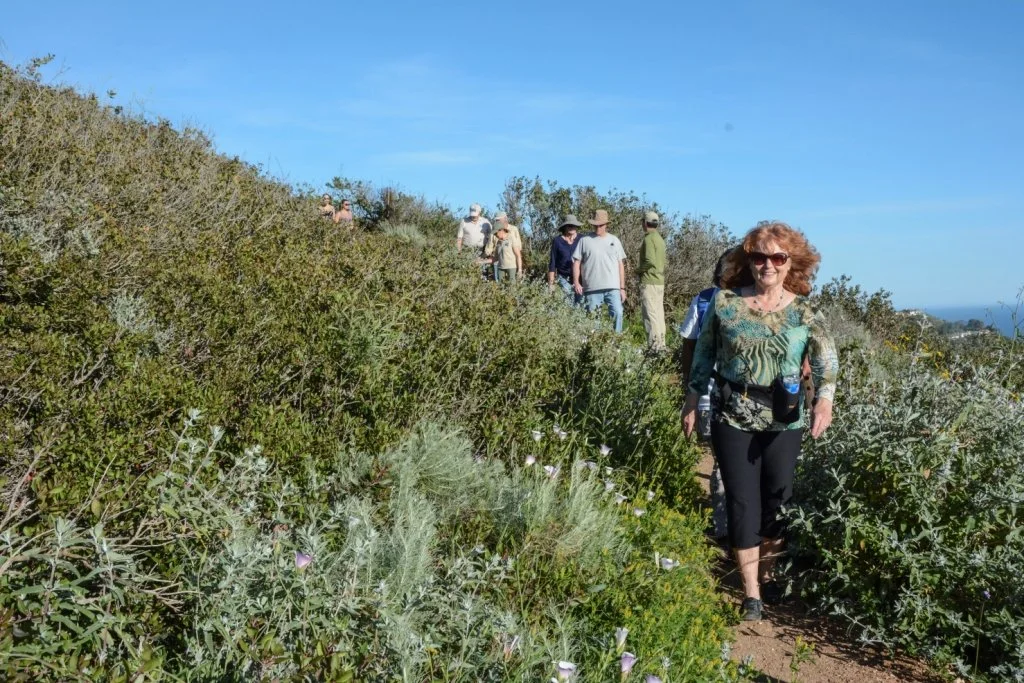The South Coast Botanic Garden- Welcomes In the Year of the Dragon Every Weekend in February By Steve Tabor Photographer & Contributor
Officially the Lunar New Year falls on Saturday, February 10th, but for those of us who want to extend the celebration the South Coast Botanic Garden (Garden) is celebrating Lunar New Year with live performances and activities every Saturday and Sunday throughout February. The celebration features performances and activities conducted by Palos Verdes High School’s Chinese Club (PVHSCC), the South Bay Chinese American Association of California- USA (SBCAA), and the Wushu Shaolin Entertainment.
Each Saturday and Sunday live performances are conducted at 11:00 a.m. and 3:00 p.m. Performances include traditional dances, traditional drums, and martial arts demonstrations. Of course, no Lunar New Year celebration would be complete without traditional Dragon and Lion dances.
The Dragon is an important creature in the Chinese culture and the only mythical animal in the Chinese Lunar calendar. In Chinese mythology dragons hold supernatural powers, scare away evil spirits and bring “good luck”. During the dragon dance, the dragon often follows a large ball carried by one of the dancers, symbolizing the “Pearl of Wisdom.” The dragon’s pursuit of the ball leads him to wisdom, knowledge, and truth.
The dragon dance dates back to China’s Han Dynasty (206 BC to 220 AD) and was performed during times of drought in hopes that it would bring rain. According to legend, there was a village named Lotus which took its name from a pond that was covered in lotuses. A woman who lived in a village finally gave birth to a son after a 999 day pregnancy. When the son was born his upper torso and back were covered with sparkling dragon scales.
When the village chief heard that the woman had given birth to a dragon god, he decided to kill the infant. Upon learning this, the woman hid the child in a wash basin and placed him in the lotus pond. The chief discovered the child’s location and went to the pond to carry out his plan. As the chief drew his knife and attempted to stab the child, the child transformed into a golden dragon and quickly jumped into the pond. Immediately dark clouds gathered, the winds steadily increased and eventually rain fell to the ground as the dragon grew larger and larger.
In order to give thanks to the dragon, villagers created a flower dragon using 999 lotus petals and performed a dragon dance at their Spring Festival (Chinese New Year).
It is believed that length of the dragon coincides with the amount of “good luck” each participant and spectator will experience in the coming year. Thus, the longer the dragon the more “good luck” the dragon will bring. Also, the most favored dragons feature an odd number of joints.
Traditional dragon dance movements include: the ‘cloud cave,’ ‘whirlpool,’ ‘tai chi pattern,’ ‘threading the money,’ ‘looking for the pearl,’ and ‘dragon encircling the pillar’ (symbolizing the continual pursuit of wisdom).
The colors used on the dragon costume symbolize various aspects of life: green is used to represent a bountiful harvest; yellow shows respect for the empire; gold or silver represents prosperity; and red creates excitement and brings good fortune.
Like the dragon, lions are substantially mythical creatures in Chinese culture, however there is some evidence that some lions may have been brought to various Imperial Gardens in the Central Plains of Western China during the Han Dynasty as an outgrowth of the silk trade. The lion symbolizes power, wisdom and superiority. Lion dances are performed to chase away evil spirits and bring prosperity to celebrants.
Often the dance is conducted with two or more lions who in the first portion of their dance, face an obstacle coming in the form of deadly animals or hazardous landforms. As a reward for overcoming these challenges, the lions are rewarded with food or money.
Rounding out the live performances, the Wushun Shaolin combines their martial arts and breakdancing skills with individual and group routines. Also, the PVHSCC entertains festival goers with a drum performance. Also, club members are scheduled to perform the Tai Ji Fan Dance. The dance incorporates martial arts movements with Chinese fans.
Throughout the day members of the PVHSCC and SBCAA have a number of culturally related activities for visitors. Craft activities include constructing puppet dragons, lanterns, and fans. PVHSCC students allow visitors to attempt their hand at calligraphy, chopstick activities, Mahjong and Wei Qi. In addition to engaging in craft activities, members of the SBCAA provide younger visitors to the festival with an opportunity to participate in their own dragon dance.
The South Coast Botanic Garden is located at 26300 Crenshaw Blvd. in Palos Verdes Peninsula. Advanced reservations are required for weekend admission to the Garden and Lunar New Year activities.
For non-Garden members ticket prices are: Adults $15, Seniors/Students $11, and Children 5-12 years $5. Children 4 years and under are free. For Garden members admission is included as part of membership.
For more information and reservations visit the Garden’s website: www.southcoastbotanicgarden.org.
The Garden is open from 8:00 a.m. to 5:00 p.m. (Entry is allowed until 4:30 p.m.)
Steve Tabor
This South Bay native’s photographic journey began after receiving his first 35 mm film camera upon earning his Bachelor of Arts degree. As a classroom teacher he used photography to share the world and his experiences with his students. Steve began his photography career photographing coastal landscapes and marine life. His experiences have led him to include portraits and group photography, special event photography as well as live performance and athletics in his portfolio. As a contributor and photojournalist, he has published stories about the people, places and events in and around the Palos Verdes Peninsula and beyond.
Interested in seeing more of Steve’s work, visit website at: www.stevetaborimages.com






























